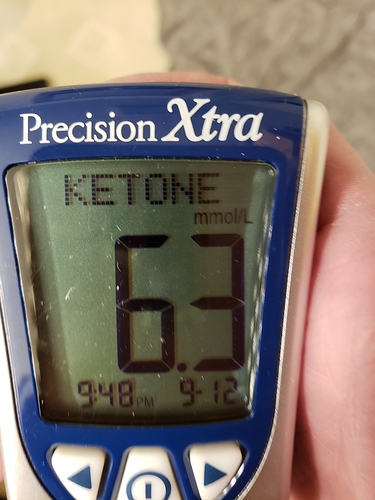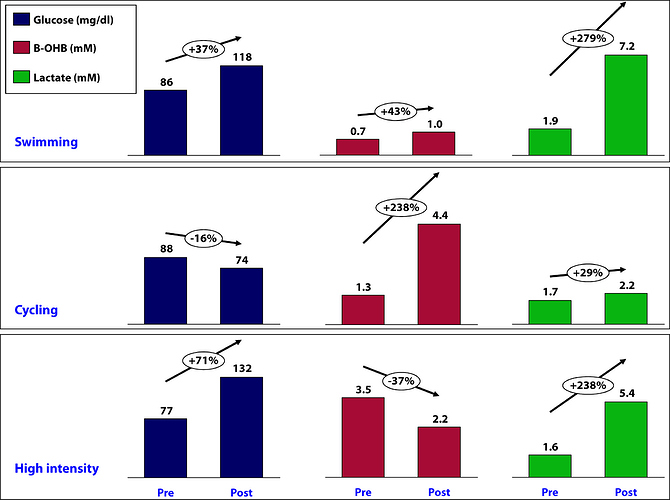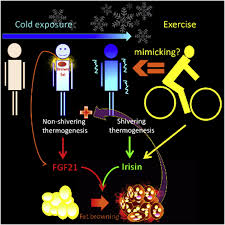Well this is something I found that explains my ketones rising after a workout.
Exercise has long been known to increase ketone production, even in people without diabetes. Increases in fat mobilization and increased blood flow to the liver during exercise promotes increased fat uptake to the liver and the conversion of fat first to acetyl-CoA and then to the ketone body acetoacetate. Acetoacetate can then convert to the two other ketone bodies – acetone and beta-hydroxybutyrate. These ketone bodies then leave the liver and can be used by muscle as energy.



 )
)
